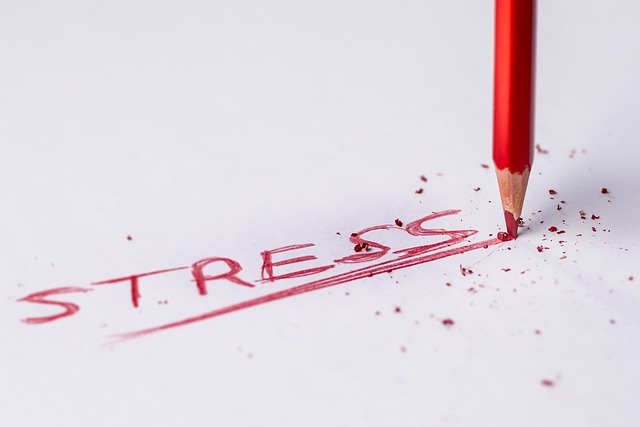Biofeedback therapy is an innovative, non-invasive stress relief therapy that teaches individuals to monitor and control their physiological reactions to stress. By providing real-time feedback on metrics like heart rate and brainwaves, it helps people understand and modify their physical responses to stressful situations. This method promotes relaxation, enhances mental well-being, and offers a comprehensive solution for managing chronic stress in today's fast-paced world. Through various techniques such as electrodermal activity (EDA), heart rate variability (HRV) biofeedback, progressive muscle relaxation (PMR), and brainwave entrainment, biofeedback equips individuals with the tools to take control of their stress responses and achieve optimal well-being.
“Stress is a prevalent modern-day challenge, yet its persistent effects on our bodies can be detrimental. In this comprehensive guide, we explore an innovative solution: biofeedback therapy for stress relief. Biofeedback offers a powerful approach to reclaim control over your well-being by teaching you to regulate physiological responses. This article delves into the science behind biofeedback, its numerous benefits for managing chronic stress, and various techniques available. Get ready to discover a transformative path towards a calmer, more balanced mind and body.”
Understanding Stress and Its Impact on the Body

Stress is a natural response triggered by various external factors, often referred to as stressors. While occasional stress can be manageable and even beneficial, chronic stress has profound effects on both mental and physical health. When stressed, our bodies initiate a cascade of physiological reactions, including increased heart rate, elevated blood pressure, and heightened hormone production. Over time, these responses can lead to wear and tear on the body’s systems, contributing to conditions like anxiety disorders, cardiovascular diseases, and even weakened immune function.
Biofeedback therapy emerges as a powerful tool in the quest for stress relief therapy. By providing individuals with real-time feedback about their bodily functions, biofeedback allows people to gain awareness of the physical manifestations of stress. Armed with this knowledge, they can learn to consciously regulate these responses, thereby reducing the body’s stress reaction and fostering a state of calm and relaxation. This therapeutic approach empowers individuals to take charge of their well-being, offering a holistic and non-invasive method to manage stress effectively.
Introduction to Biofeedback Therapy

Biofeedback therapy is a powerful tool in the realm of stress relief therapy, offering individuals a way to gain control over their bodily functions and mental state. This non-invasive technique empowers folks to become active participants in regulating their own stress response. By providing real-time feedback about physiological measurements like heart rate, muscle tension, and brain waves, biofeedback allows people to learn and practice relaxation techniques more effectively.
In today’s fast-paced world, navigating the hustle and bustle of daily life can be a significant source of stress. Biofeedback therapy offers a unique approach to managing these pressures by teaching individuals how to recognize and modify their physical reactions to stressful situations. Through practice, one can learn to induce a state of calm, enhancing overall well-being and promoting better mental health.
How Biofeedback Works for Stress Relief

Biofeedback is a powerful tool in the quest for stress relief and management, offering individuals a way to gain control over their bodies’ physiological responses. It works by providing real-time feedback about various bodily functions, allowing people to learn how to consciously regulate these functions, ultimately reducing stress levels. During a biofeedback session, sensors are placed on specific body parts, such as the fingers, ears, or forehead, to monitor heart rate, skin temperature, and brainwave activity. This immediate feedback enables individuals to recognize when their bodies are under stress and learn techniques to calm themselves.
The process involves training the mind-body connection, where a person learns to influence their autonomic nervous system. By understanding how their body reacts during stressful situations, they can employ various relaxation strategies, such as deep breathing or progressive muscle relaxation, to counterbalance these responses. This therapy offers a unique approach to stress management, empowering individuals to become active participants in their mental health and well-being.
Benefits of Biofeedback for Chronic Stress Management

Biofeedback is a powerful tool in the arsenal against chronic stress, offering a unique and highly effective approach to stress relief therapy. By providing individuals with real-time feedback about their bodily functions, biofeedback allows for a deeper understanding of stress responses and empowers them to gain control. Through this process, people can learn to relax and modulate physiological reactions, which is especially beneficial for those struggling with long-term stress.
One of the key advantages of biofeedback for chronic stress management is its ability to promote self-regulation. It teaches individuals to recognize and alter their physical responses to stressful situations, leading to improved mental resilience. This therapy provides concrete, actionable insights into how stress affects the body, enabling people to make informed choices for better well-being.
Different Types of Biofeedback Techniques for Stress Reduction

Biofeedback is a powerful tool for managing stress, offering various techniques to help individuals gain control over their physiological responses. One of the key benefits is its ability to teach people how to relax and modulate their bodies’ reactions to stressful situations, making it an effective stress relief therapy.
The different types of biofeedback techniques include electrodermal activity (EDA) feedback, which measures skin conductivity changes related to emotional arousal, helping individuals learn to control their response. Another is heart rate variability (HRV) biofeedback, focusing on adjusting breathing and heart rate to promote relaxation. Muscle tension release using progressive muscle relaxation (PMR) biofeedback is also popular, guiding users through tensing and releasing different muscle groups to reduce physical stress. Additionally, brainwave entrainment biofeedback uses sound or light patterns to synchronize brainwaves, inducing a calm state for stress management.
Preparing for a Biofeedback Session: What to Expect

Preparing for your first biofeedback session is an important step in embarking on your journey towards stress relief therapy. You’ll want to ensure a comfortable and relaxed state of mind, as this process relies heavily on your ability to respond to real-time feedback from your body. Before the session, take some time to unwind with deep breathing exercises or meditation, allowing yourself to disconnect from stressful thoughts and concerns. It’s beneficial to wear loose clothing and remove any jewelry that might interfere with the sensors used during the therapy.
During the preparation phase, a qualified biofeedback therapist will guide you through the process, explaining the equipment and what to expect. They’ll attach sensors to your body, typically at strategic points related to stress response systems. These sensors monitor physiological responses like heart rate, skin temperature, and muscle tension. As the session begins, you’ll be introduced to these readings, providing a unique and powerful tool for understanding your body’s reactions to stress.
Integrating Biofeedback into Your Stress Management Plan

Integrating biofeedback into your stress management plan can be a game-changer in the quest for optimal well-being. This non-invasive therapy equips individuals with valuable self-regulating skills, empowering them to gain control over their physiological responses to stressful situations. By providing real-time feedback about bodily functions like heart rate and muscle tension, biofeedback therapy enables folks to consciously alter these reactions, thereby reducing stress levels effectively.
Whether you’re seeking alternative ways to unwind or complement existing relaxation techniques, biofeedback offers a tailored approach to stress relief therapy. Through regular practice, individuals can learn to activate their body’s natural relaxation responses, foster mental clarity, and enhance overall resilience against the adverse effects of chronic stress.
